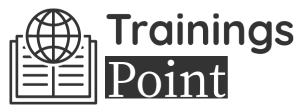This presentation by Ginette Collazo will discuss key topics including content development and formats designed for human error reduction due to procedures. Procedures are important for both execution and audits. These should be written for users without missing important information for regulators. Usually, procedures have weaknesses that harm productivity, quality, and regulatory standing.
WHY SHOULD YOU ATTEND?
One of the major causes for incurring quality and production losses in many industries is human error. Although it is unlikely that human error can ever be totally abolished, many human performance problems could be prevented. Human errors begin at the design stage. Procedures play a vital role in human reliability. Nevertheless, it is extremely necessary to understand human behavior and the psychology of error as well as understand exactly where the instruction's weaknesses are, so procedures can be human-engineered, improved, and/or fixed.
AREA COVERED
- SOP writing outline
- Content development
- The rationale for procedure use
- Regulatory compliance background
- Universal purpose of procedures
- The human perspective
- Human error as a root cause
- The thinking and reading process
- Common mistakes and causes
- How to create and maintain a procedure
- Goals of a procedure
- Good procedure writing practices (Terminology, formats, layouts, mixed cases, steps content, common words, references, branching, conditional steps, the use of precautions, warnings, and Cautions)
- Procedure styles
- Use of electronic information networks for procedure access
LEARNING OBJECTIVES
- Understand the importance of procedures
- Learn why people refuse to use procedures
- Learn the best formats and content elements for SOPs
- Learn document hierarchy and different types of procedures based on their use
- Understand the common Human Errors and deviations related to the use of procedures
- Understand the reading and writing processes and how people may impact the processes
WHO WILL BENEFIT?
- QA/QC directors and managers
- Process improvement/excellence professionals
- Training directors and managers
- Plant engineering
- Compliance officers
- Regulatory professionals
- Executive management
- Manufacturing operations directors
- Human factors professionals
One of the major causes for incurring quality and production losses in many industries is human error. Although it is unlikely that human error can ever be totally abolished, many human performance problems could be prevented. Human errors begin at the design stage. Procedures play a vital role in human reliability. Nevertheless, it is extremely necessary to understand human behavior and the psychology of error as well as understand exactly where the instruction's weaknesses are, so procedures can be human-engineered, improved, and/or fixed.
- SOP writing outline
- Content development
- The rationale for procedure use
- Regulatory compliance background
- Universal purpose of procedures
- The human perspective
- Human error as a root cause
- The thinking and reading process
- Common mistakes and causes
- How to create and maintain a procedure
- Goals of a procedure
- Good procedure writing practices (Terminology, formats, layouts, mixed cases, steps content, common words, references, branching, conditional steps, the use of precautions, warnings, and Cautions)
- Procedure styles
- Use of electronic information networks for procedure access
- Understand the importance of procedures
- Learn why people refuse to use procedures
- Learn the best formats and content elements for SOPs
- Learn document hierarchy and different types of procedures based on their use
- Understand the common Human Errors and deviations related to the use of procedures
- Understand the reading and writing processes and how people may impact the processes
- QA/QC directors and managers
- Process improvement/excellence professionals
- Training directors and managers
- Plant engineering
- Compliance officers
- Regulatory professionals
- Executive management
- Manufacturing operations directors
- Human factors professionals
Speaker Profile
 Ginette M. Collazo
Ginette M. Collazo
Ginette Collazo, Ph.D. is an Industrial-Organizational Psychologist with 20 years of experience that specializes in Engineering Psychology and Human Reliability, disciplines that study the interaction between human behavior and productivity. She has held positions leading training and human reliability programs in the Pharmaceutical and Medical Device Manufacturing Industry.Nine years ago, Dr. Collazo established Human Error Solutions (HES), a Florida based boutique consulting firm, where she has been able to position herself as one of the few Human Error Reduction Experts in the world. HES, led by Dr. Collazo, developed a unique methodology for human error investigations, cause determination, CA-PA development …
Upcoming Webinars

2025 EEOC & Employers: Investigating Claims of Harassment …

Drive Recruiting Success with the Using Recruiting Metrics …

Introduction to Microsoft Power BI Dashboards

Designing Employee Experiences to Build a Culture of Compli…

Mastering Job Descriptions: Legal and Practical Insights fo…

What is in Store for Employers When Updating Employee Handb…

Effective Onboarding: How to Welcome, Engage, and Retain Ne…

Impact Assessments For Supplier Change Notices

Onboarding Best Practices for 2025: Proven Strategies to Po…

Accounting For Non Accountants : Debit, Credits And Financi…

FDA Compliance And Laboratory Computer System Validation

The Anti-Kickback Statute: Enforcement and Recent Updates

Creating a Successful Job Rotation Program

How To Create Psychological Safety in your Organization

Transforming Anger And Conflict Into Collaborative Problem …

Aligning Your HR Strategy with Your Business Strategy

How to Give Corrective Feedback: The CARE Model - Eliminati…


AI at Your Service: Enhancing Your Microsoft OfficeSkills w…

Zero Acceptance Sampling to Reduce Inspection Costs

Identifying, Managing, and Retaining High Potential Employe…

I-9 Audits: Strengthening Your Immigration Compliance Strat…

Why EBITDA Doesn't Spell Cash Flow and What Does


Female to Female Hostility @Workplace: All you Need to Know

Developing and Implementing Quality Culture in the Organiza…

Human Factors Usability Studies Following ISO 62366 and FDA…

FDA Recommendations for Artificial Intelligence/Machine Lea…

Project Management for Non-Project Managers - How to commun…

Dealing With Difficult People In Life & Work

How to Document Employee Discussions and Why it is Important

2-Hour Virtual Seminar on the 6 Most Common Problems in FDA…

How to Write Effective Audit Observations: The Principles f…

Enhancing Pivot Tables with Images: Visualize Your Data Lik…


Project Management for administrative professionals

How to Write Contracts for Procurement Professionals

Uplifting the Credibility of HR: How to Build the Credibili…

Performance of Root Cause Analysis, CAPA, and Effectiveness…

Strategic Interviewing & Selection: Getting the Right Talen…

FDA Audit Best Practices - Do's and Don'ts

Successful Strategies for FDA Expedited Pathways for Your D…

Unlock Employee Loyalty: Stay Interviews Will Keep Them Eng…

How to Manage the Legal Landmine of the FMLA, ADA and Worke…

Excel Lookup Functions: VLOOKUP, HLOOKUP, and XLOOKUP Made …
